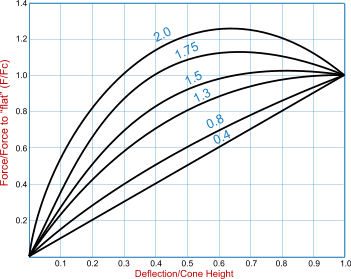506818
Aerospace
- Jun 5, 2014
- 35
I'm using Belleville washers with PTFE gaskets to account for gasket creep and handle vibrations on flanges. I want to work out torque values to use. The idea is that the Belleville washers will deflect enough to account for the gasket creep in the PTFE. I'm seeing this as springs in series and I have the information for the Belleville washers, but not the gaskets. How would I work out both the expected creep/compression set as well as the spring constant for the gasket? Gaskets to be used are Gore 800 series.

